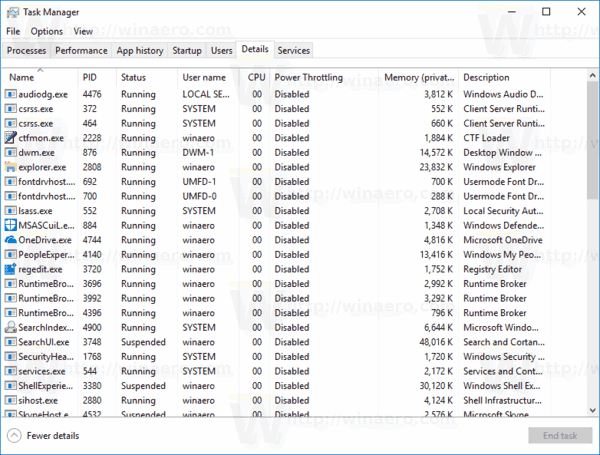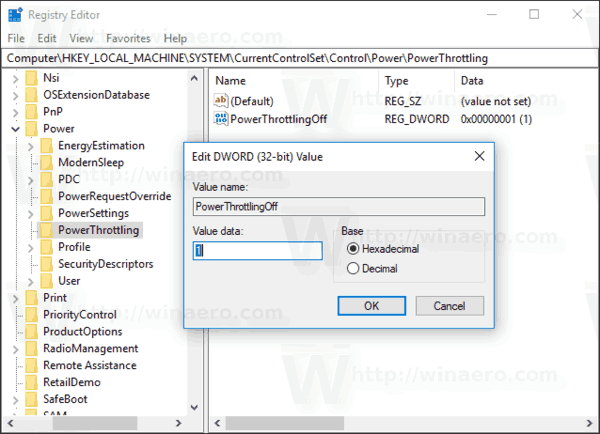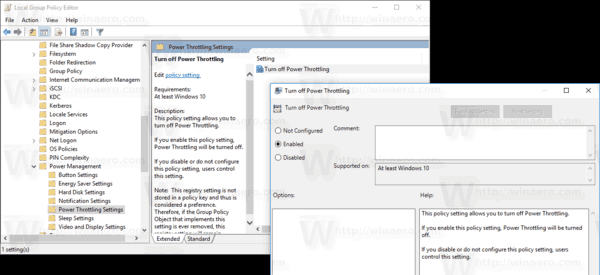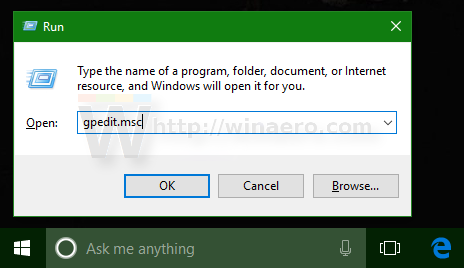Recent Windows 10 versions come with a new feature, called "Power Throttling". It should improve the battery life of laptops and tablets on processors which support it. Here is what this feature is and how to disable it.
Advertisеment
The main idea behind the feature is to limit the CPU resources for inactive apps. If some application is minimized or runs in the background, it still uses your system resources. For such apps, the operating system will place the CPU in its most energy-efficient operating modes – work gets done, but minimal possible battery is spent on that work. A special smart algorithm will detect active user tasks and keep them running, while all other processes will be throttled. The Task Manager can be used to find the status of such apps. There is a dedicated column "Power Throttling" in Task Manager on the Details tab which will indicate this.

Previously, you could disable the Power Throttling feature by enabling the High Performance power plan in Windows 10. In Fall Creators Update (Windows 10 version 1709), there is a dedicated Group Policy option which can be used to disable Power Throttling. Here is how.
To disable the Power Throttling feature, ensure that you are signed in as Administrator before proceeding.
To disable Power Throttling in Windows 10, do the following.
- Open Registry Editor.
- Go to the following Registry key:
HKEY_LOCAL_MACHINE\SYSTEM\CurrentControlSet\Control\Power\PowerThrottling
Tip: See how to jump to the desired Registry key with one click.
If you do not have such a key, then just create it.
- Here, create a new 32-bit DWORD value PowerThrottlingOff. Note: Even if you are running 64-bit Windows, you still need to use a 32-bit DWORD as the value type.
Set it to 1 to disable Power Throttling.
- To make the changes done by the Registry tweak take effect, you need to restart Windows 10.
You are done!
Later, you can delete the PowerThrottlingOff value to re-enable the feature.
To save your time, I made ready-to-use Registry files. You can download them here:
The undo tweak is included.
Disable Power Throttling using Local Group Policy Editor
If you are running Windows 10 Pro, Enterprise, or Education edition, you can use the Local Group Policy Editor app to configure the options mentioned above with a GUI.
- Press Win + R keys together on your keyboard and type:
gpedit.msc
- Group Policy Editor will open. Go to Computer Configuration\Administrative Templates\System\Power Management\Power Throttling Settings. Enable the policy option Turn off Power Throttling as shown below.

That's it.
Support us
Winaero greatly relies on your support. You can help the site keep bringing you interesting and useful content and software by using these options:


I guess this power throttling might be useful to limit new apps ability to hog system resources since closing them doesn’t really close them, just like on IOS, if I am not mistaken.
Then you need to decide between using the power to run those background traditional win32 apps you choose to run in the background because you see and control what is happening with them and let new apps waste your resources when you would prefer them closed vs leaving power throttling enabled and maybe have those background tasks you want have more limited resources?
Will this be folded into WinAero Tweaker?
yep, for sure
This is a total garbage feature! I am grateful that I can nix it through regedit.exe
Microsoft should stop installing such eco-features and other green tree-hugging features.
My Windows runs on a performance PC, not on an itty-bitty retarded weak laptop.
braindead.
Is it the same feature as what’s described here? https://docs.microsoft.com/en-us/windows-hardware/design/device-experiences/design-guide
“Overthrottle threshold
Starting with Windows 10, a new feature called a thermal zone state, has been introduced into Windows thermal management, along with one state: overthrottled. When a thermal zone exceeds the device’s designed throttle level, the thermal manager will notify the operating system components that the system is overthrottled. This notification allows the system to reduce workload to improve the thermal state.”